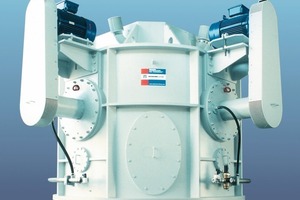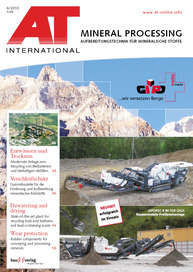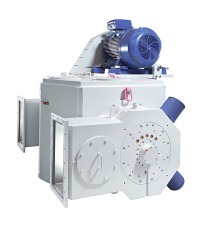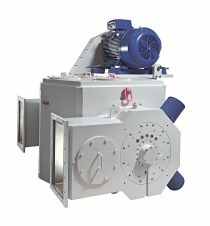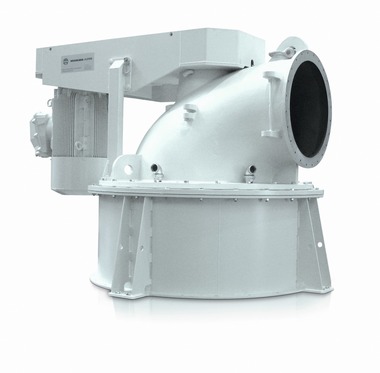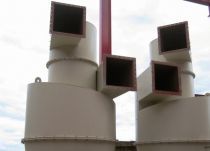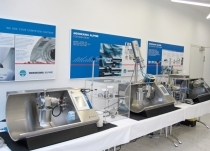Turboplex multi-wheel classifier with numerous design improvements
At POWTECH 2010 Hosokawa Alpine presented a Turboplex 315/6 ATP-NG multi-wheel classifier (Fig.) with numerous design improvements. Over and above this, and dependent on the application, a total of six different classifying wheel designs are shown which are suitable for both standard applications with the patented ATP-NG classifying wheel or also for hard materials such as zircon sand (Al2O3 monobloc ceramic wheel). Turboplex air classifiers are employed for the ultra-fine classification of mineral fillers such as limestone or calcite, dolomite, talc, baryte and perlite, and in the ceramics industry for the classification of quartz, feldspar and kaolin. The result are superfine powders in the range d97 < 2-20 µm. The classifier operates across the entire separation range without oversize particles and ensures a high yield thanks to the integrated coarse material classifier. With Turboplex multi-wheel classifiers, several horizontally arranged classifying wheels of the same diameter are driven separately. The common speed control is achieved via an adjustable static frequency converter. What‘s new is that the maximum classifying wheel speed has been increased by another 10 %. Classifying wheel removal is now facilitated with a new articulated arm which saves assembly time during maintenance. The classifier head has also been optimised with regard to noise and vibrations and is characterised by its outstanding smoothness of running. The new and streamlined design saves on overall height. Product feed is either from the side by gravity with an air seal or direct, i.e. entrained in the flow of classifying air.
For fineness values in the range of d50 < 1 µm at reduced energy consumption, NG classifying wheels with smaller diameters are used. The advantages of the „New Generation“ classifying wheel become noticeable especially in the submicron range with a low energy requirement at a high yield. On average, it was possible to reduce the pressure drop of the NG wheel by approx. 60 % in comparison with the standard ATP wheels. It is possible with the new classifying wheel generation to achieve fineness values that were formerly inconceivable with production systems. In combination with new mills, e. g. Hosokawa Alpine‘s S.O.-SF ball mill or ATR agitated ball mill, fine powders of d50 = 0.5 µm are achieved. Whereas with the manufacture of ultrafine fillers, it is the fineness of the classification that is all-important, other applications target a coarse material with a particle size distribution that is as steep as possible. The NG classifying wheels have also proven themselves to be excellent in such cases.
HOSOKAWA ALPINE AG, Augsburg (D),
Tel.: + 49 821 5906-265, www.alpinehosokawa.com

